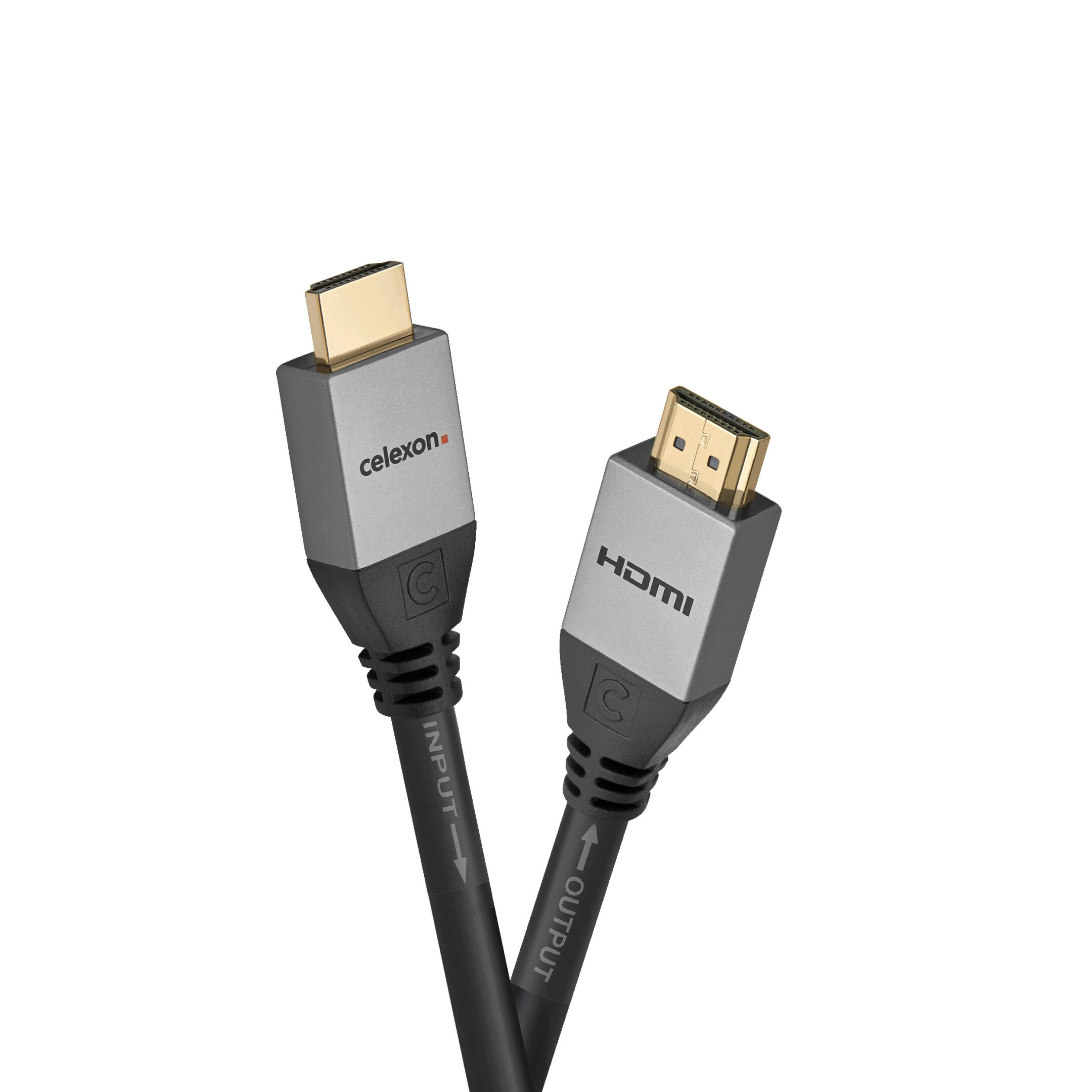



























£67.99*


Product information
The celexon active HDMI cable with Ethernet is HDMI 2.0 compliant and thus transmits signals at up to 18 Gbps with resolutions up to 4K (4096x2160p @60Hz with 8 bit colour depth) and 4K HDR with 10 bit colour depth. With the help of HDR (High Dynamic Range) technology, a greater dynamic and colour range can be displayed, making the picture more brilliant and detailed.
The difference to standard HDMI cables with Ethernet lies in the powerful signal amplifiers built into the connector.
With increasing cable length, the line resistance in the cable increases and the cable attenuation increases. This has a negative effect on the signal quality.
This is particularly problematic for the transmission of high data rates, because without amplification the signal at the end of the cable becomes too weak to be able to display it cleanly.
As a result, either picture errors occur in the form of digital artefacts, or the entire picture and data connection breaks down completely.
This is why celexon's active HDMI cables contain a special chip that amplifies the signal with 6 Gbps per TMDS transmission line, enabling loss-free signal transmission over longer distances. The active HDMI cable from celexon is available in lengths of up to 20m.
The additional Ethernet channel allows Internet-capable AV components to be connected to the in-house network via HDMI cable only. It is therefore sufficient if the TV is connected to the network via cable. The AV receiver or Blue-Ray player then receives, in addition to the actual video signal, also the network via HDMI cable. This eliminates the need for a network switch and additional cables.
The HDMI cables of the Professional Line are triple shielded and, thanks to their gold-plated contacts, guarantee high corrosion resistance and reliable transmission performance.
celexon's Professional Line combines technically reliable functionality and flawless workmanship with elegant design.
Whether you use our cables for office (home office), entertainment or professional use, you will be perfectly connected in all areas.
KEY INFORMATION
- HDMI-A male to HDMI-A male
- Standard: High Speed HDMI with Ethernet - HDMI 2.0 compliant
- Transmission rate: 18 Gbps
- Max. Resolution: 4K / UltraHD / 4096x2160p @60Hz, 8 Bit, 4:4:4 or HDR (10 Bit)
- Supported colour spaces: 16/24 bit RGB/YUV, Deep Color, x.v.Color.
- Supported audio standards: ARC, Dolby Digital Plus, Dolby TrueHD, DTS-HD Master Audio, DVD Audio, SA-CD.
- Other features: HEC (HDMI Ethernet Channel), CEC (Consumer Electronic Control), 3D, HDCP, EDID.
- Connector: gold-plated contacts, chrome-plated aluminium housing, flexible bend protection, active signal amplifier
- Cable: high-purity copper conductors, 3-fold shielding, PVC sheath with 7.3 mm diameter
- Cable colour: black
- Cable type: round
- Cable length: 20m
- REACH, RoHs compliant
IN THE BOX
1x celexon active HDMI cable with Ethernet - 2.0a/b 4K 20m - Professional Line
* All components used must support this feature.
Technical data
| Name | celexon active HDMI Cable with Ethernet - 2.0a/b 4K 20m - Professional Line |
|---|---|
| Article number | 1000015534 |
| GTIN/EAN | 4260094743078 |
| Manufacturer SKU | 1000015534 |
| Model name | 1000015534 |
| Brand | celexon |
| Product Type | HDMI cable |
| Product Series | celexon HDMI active Professional Line |
| Inputs | 1x HDMI |
| Outputs | 1x HDMI |
| Features | 4K Pass Through |
| Cable length | 20 m |
| Product width | 2.3 cm |
| Product height | 1.4 cm |
| Product depth | 2,000 cm |
| Weight | 1.925 kg |
| Colour | Black |
| Condition | New |
| Warranty | 24 Month |
| Warranty type | Bringin service Service and support information |
Product safety
| Person responsible for the EU |
|---|
| celexon Europe GmbH |
| Gutenbergstraße 2 |
| 48282 Emsdetten |
| Germany |
| info@celexon.de |



